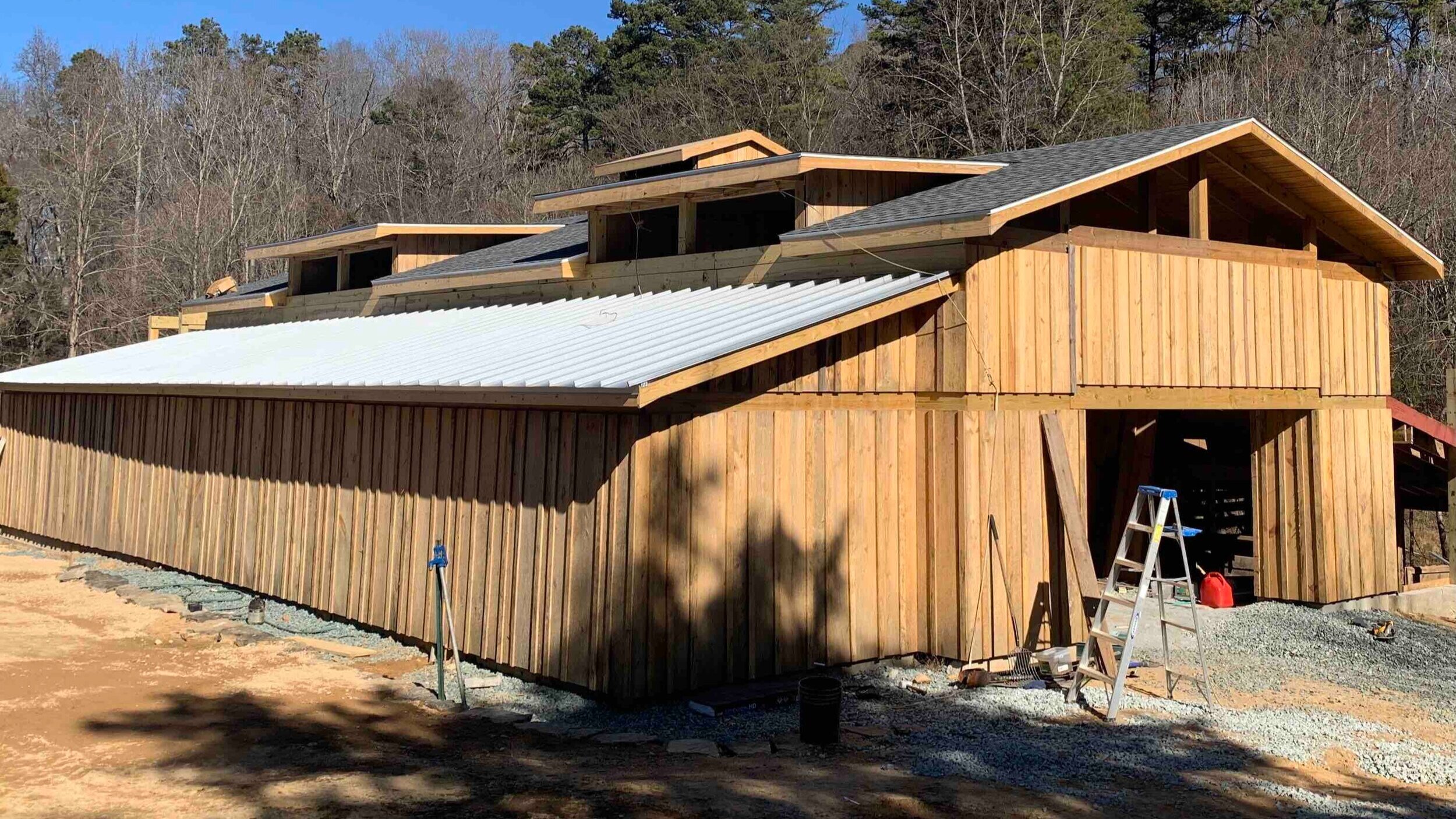
Lumber Uses (and Rules)
When can I use the lumber? Can I use it green? How long does it have to dry?
It depends on what you want to use your lumber for. If you intend for your wood to become indoor furniture, you will want to make sure that it at least gets to ambient, air-dried moisture content (~15%) before you bring it into the house. If you don’t, you’ll likely find that the wood will twist and buckle in your dry, climate-controlled environment as it shrinks to ~8% moisture content. Before you use your lumber for framing, such as for a house or barn, you will want to make sure that it is at or below 19% moisture content. Properly air-dried lumber is 20-30% stronger than freshly, cut lumber. If you are using your lumber for board and batten siding, or non-essential applications like outdoor tables, then yes, you can use it green. Drying is a complex process, but some rules of thumb to note are as follows: Softwoods dry faster than hardwoods. Summer heat really helps. Air-flow aids drying. Drying too fast (with sunlight or a dehumidifier in a closed room) can warp the wood.
How do I check moisture content? Or, I checked my stacked lumber with a pin-prick moisture meter and it says it’s dry, can I use it?
I wish it were otherwise, but the budget moisture meters at hardware stores tend to test only the driest, surface area of lumber. They tend to give the driest possible readings and they do not accurately show the internal moisture content. If you are a client of mine, I will likely be available at some point to swing by with my pinless moisture meter. If you are going to buy a pinless meter, I recommend Wagner brand.
Can I sell my lumber?
Yes, but I recommend that you think more about offsetting lumber costs you otherwise would have than trying to turn a profit on your lumber. This is not because your lumber isn’t valuable; rather, it’s because the lumber supply chain is so huge, and the log supply is so cheap and so constant, that lumber sellers don’t have much of an incentive to work with small homeowners. You can, of course, sell your lumber on Facebook Marketplace, but be forewarned that setting up lumber showing appointments with hobbyists can be time-consuming.
Can I use the lumber from my land to build my home?
This is a very complex issue, but the short answer is most likely yes. In our state’s building codes, section R602.1 outlines four criteria for using lumber from your own land for building: the wood must come from your property; it must be properly dried for 90 days or at least to 19% or below moisture content; you or a relative must live in it the dwelling for at least a year after it receives its Certificate of Occupancy; and you let the building inspection department know your plans before you have the trees cut. A caveat within this law (205) does give Building Inspectors discretion of whether or not to approve your lumber; therefore, you may be at the whims of your inspector. That said, another law allows a licensed architect or engineer to overrule a building inspector. This is a complex issue that I’ve been working on.
Can I use untreated lumber as posts or in ground-contact situations?
No, I wouldn’t recommend it. For barns and sheds, cedar posts can be sunk into the ground. (As a farmer, though, I’ve had cedar posts decay after 15 years in the ground and had to replace them). I recommend pressure treated, ground-contact rated lumber for posts and/or concrete footers. You’ll want to make sure that those footer or posts drop below the frost line (12” in NC). And, make sure that any untreated lumber you use is at least 24” above grade.
How much will my wood shrink?
Wood tends to shrink width-wise and not much in length or thickness. Therefore, a 2x6x12 will likely be close to 2” thick and 12’ long after it has dried. Width-wise, though, you may see that your original 6” shrinks 1/4” to 1/2". This increases with the wider your original cut was: a 24” wide slab may end up 23” after air-drying.
Do I have to have my lumber kiln-dried before using it?
I’ve built fine, indoor dining tables and countertops with air-dried lumber for years. They all look good now; however, they also all moved or shifted some since being moved inside. Therefore, it depends on your threshold for wood movement. If you are going to use the lumber for ultra-fine furniture or flooring, then yes, I recommend having it kiln-dried after it has air-dried for some time. You can put lumber in a kiln immediately after it has been milled, but it’s expensive. It’s best to get the wood to 25% outside before kiln-drying it. If you are going to use the wood for your home construction, then having it kiln-dried will also sterilize it. If you are going to use the wood for outdoor shelters —barns, garages, etc— or indoor personal furniture (when a little movement is OK) then air-dried will be fine.
Can I build a shed without pulling a permit?
In most areas, you are able to build a shed, coop, or barn that is at or under 12’x12’ without needing a permit. Note that the rules are not clear on whether or not this 12x12 refers to the footprint or the roof line, so I would err on the side of caution and map the roofline. (Therefore the footprint would be closer to 8x8 or 8x10). Note that this shed cannot be connected to essential services, such as electricity or plumbing.